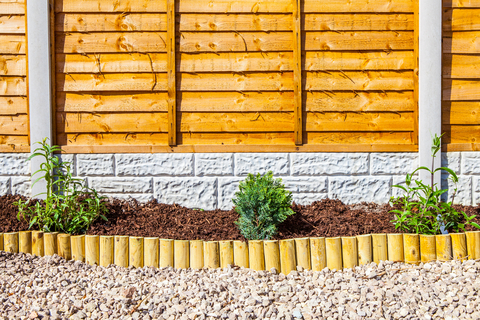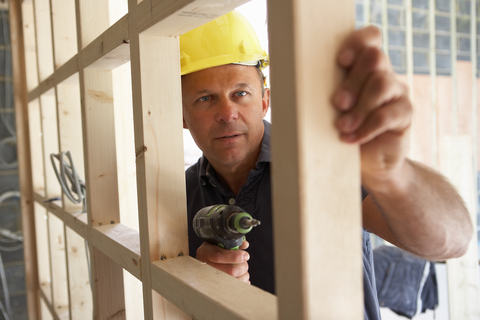Timber vs Metal Fencing: Benefits, Costs & Lifespan
Published on 9 April 2025
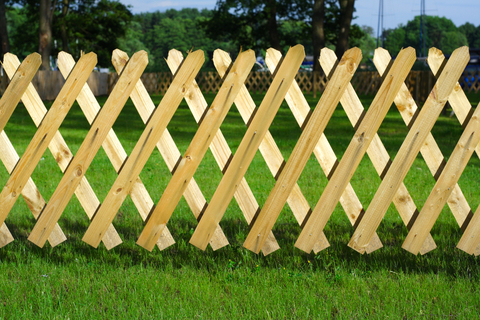
Choosing the right fencing for your UK garden is a significant decision. It impacts your home’s kerb appeal, your privacy, security, and of course, your budget. Two popular contenders dominate the market: traditional timber and modern metal. While metal fencing has its place, timber fencing often emerges as the smarter, more versatile, and surprisingly sustainable choice for many homeowners.
You’re likely weighing up the pros and cons, wondering about longevity, maintenance, and overall value. It can feel overwhelming! But don’t worry, we’re here to help. As a family-run timber company with over 145 years of experience, Linnell Bros has seen fencing trends come and go. We understand timber inside and out. In this article, we’ll provide a clear, side-by-side comparison, focusing on the benefits of timber fencing compared to metal fencing, helping you make an informed choice for your garden sanctuary.
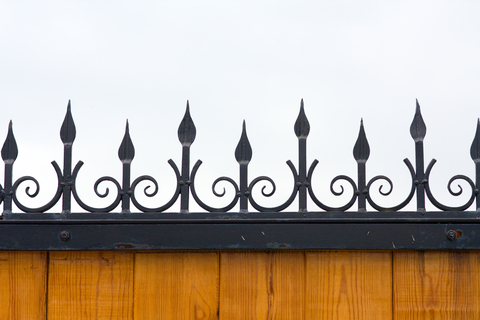
1. Cost-Effectiveness: Winning the Upfront Battle
For many homeowners, the initial outlay is a primary concern. Generally speaking, timber fencing is significantly more cost-effective upfront than metal fencing. Standard timber fence panels, like closeboard or lap panels, are readily available and competitively priced. Even high-quality, pressure-treated timber options often come in lower than powder-coated steel or aluminium equivalents.
Consider the popular choices:
- Timber Panels (e.g., Closeboard): More affordable per linear metre.
- Metal Panels (e.g., Powder-Coated Steel/Aluminium): Typically carry a higher price tag due to material costs and manufacturing processes.
Furthermore, timber lends itself well to DIY installation (more on that next), potentially saving you hundreds, if not thousands, of pounds on professional labour costs. While metal can be installed DIY, its weight and the potential need for specialist fixings can make it more challenging. When looking at the cost of a wooden fence in the UK, timber consistently presents a more budget-friendly starting point.
2. Ease of Installation & Repair: The DIY Dream
This is a major advantage for timber. Wood is relatively lightweight compared to steel or wrought iron, making it much easier to handle and manoeuvre during installation. Cutting timber panels or posts to size requires standard tools that many DIY enthusiasts already own.
Why Timber Wins on Installation:
- Lighter Weight: Easier for one person to manage panels and posts.
- Easy to Cut: Simple adjustments can be made on-site with basic saws.
- Standard Fixings: Uses common screws, nails, and bolts.
- Forgiving Material: Small errors are often less critical than with precisely engineered metal systems.
Metal fencing, conversely, is heavier, often requiring two people for safe handling. Cutting metal posts or panels usually necessitates specialised tools like angle grinders. Installation might involve concreting posts more robustly due to weight or using specific bracket systems.
Repairs also favour timber. If a single board gets damaged, it can usually be replaced individually. With some metal fence types, damage might mean replacing an entire panel section, which is often more costly and complex. Our guide on how to install a closeboard fence shows just how achievable a professional-looking result is for a competent DIYer.
3. Aesthetic Versatility: Naturally Beautiful & Adaptable
Wood possesses a natural warmth and beauty that metal struggles to replicate. It blends seamlessly into garden environments, complementing planting schemes and natural landscapes. Whether you have a traditional cottage garden or a sleek, modern outdoor space, there’s a timber fencing style to suit.
- Natural Look: The grain and texture of wood offer timeless appeal.
- Customisation: Timber can be easily stained or painted in virtually any colour to match your house, garden furniture, or design vision. Want a contemporary grey, a classic dark oak, or a cheerful colour? Easy with timber.
- Patina: Over time, untreated or naturally finished timber develops a silvery patina, which many find attractive.
- Style Variety: From solid closeboard panels offering complete privacy to more decorative options like picket fences or trellis tops, timber offers huge design flexibility.
Metal fencing, while sometimes chosen for a sharp, modern look, can often feel colder or more industrial. Styles like railings offer little privacy, and while colours are available, they lack the organic feel and customisation potential of paint or stain on wood. For achieving that perfect privacy fence UK homeowners desire, solid timber panels are usually the superior option.
4. Sustainability: The Eco-Conscious Choice
In an era of increasing environmental awareness, the sustainability of building materials is paramount. Responsibly sourced timber is a standout performer.
- Carbon Storage: Trees absorb carbon dioxide from the atmosphere as they grow. This carbon remains stored in the wood throughout the fence’s lifespan. Using wood products helps lock away carbon.
- Lower Embodied Carbon: Manufacturing steel and aluminium is an energy-intensive process, resulting in significantly higher ’embodied carbon‘ (the total greenhouse gas emissions generated during production). A study highlighted by MIT News found wood to be “far better than steel in embedded carbon”.
- Renewable Resource: Timber, when harvested sustainably, is a renewable resource. Forests can be replanted and managed for continuous supply. Metal ores are finite resources.
Choosing sustainable fencing materials like timber is a positive step towards reducing your environmental impact. While metal can be recycled, its initial production footprint is considerably larger.
5. Privacy & Security: Creating Your Secluded Haven
One of the primary functions of a garden fence is to provide privacy. This is where close-board or featheredge timber fencing truly excels. The overlapping or tightly butted vertical boards create a solid barrier with virtually zero sightlines, ensuring your garden remains your private sanctuary.
Metal fencing often incorporates gaps between railings or panels (e.g., vertical bar or mesh designs), offering limited visual screening. While some solid metal panel options exist, they are less common and typically more expensive than timber equivalents.
Beyond visual privacy, solid timber fences also offer better acoustic buffering than open-style metal fences, helping to dampen noise from neighbours or nearby roads. While not soundproof, a solid timber fence contributes more effectively to a peaceful garden environment. From a security perspective, a well-installed, solid timber fence presents a significant physical barrier.
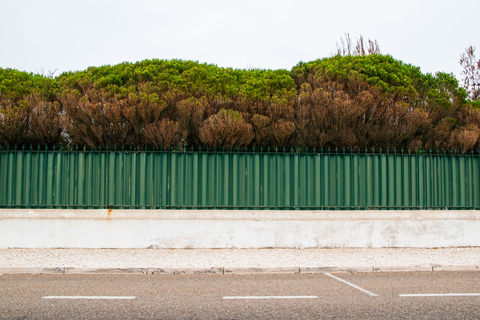
6. Maintenance Reality Check: Timber vs Rust
It’s true that timber fencing requires some maintenance to maximise its lifespan. The most common disadvantage of a wooden fence cited is this need for upkeep. Typically, this involves applying a wood preservative or stain every few years to protect against moisture ingress, rot, and UV damage.
However, let’s compare this realistically to metal:
Timber vs Metal Fencing: Maintenance Comparison
| Feature | Timber Fencing (Pressure-Treated) | Metal Fencing (Galvanised/Powder-Coated) |
| Routine Action | Periodic cleaning and re-application of stain/preservative. | Periodic cleaning; inspection for coating damage (chips, scratches). |
| Frequency | Typically every 2-5 years for re-treatment, depending on product and exposure. | Lower frequency for major maintenance, but regular visual checks recommended. |
| Primary Concern | Preventing moisture ingress leading to rot or decay, especially near ground level. | Preventing breaches in the protective coating which can lead to rust/corrosion. |
| Vulnerability | Susceptible to rot and insect attack if preservative barrier fails or isn’t maintained. | Coating can be chipped/scratched by impacts (tools, bikes etc.), exposing underlying metal. Coastal areas can accelerate corrosion if coating is damaged. |
| Ease of Repair | Relatively easy. Scratches/damage can be sanded; individual boards often replaceable; re-treatment straightforward. | Can be tricky. Touch-up paints may not perfectly match; requires careful preparation to prevent rust spreading under the repair. Professional repair might be needed for larger areas. |
| Associated Costs | Cost of cleaning supplies, stain/preservative, brushes/rollers, and time/labour. | Minimal routine cost; potentially higher cost/difficulty for effective chip/rust repair. |
| Low-Cost Options | Untreated or dip-treated timber requires much more frequent maintenance. | Cheaper, non-galvanised or poorly coated metal options are highly prone to rust and require diligent upkeep/painting. |
10-Year Maintenance Outlook
| Feature | Timber Fence (Pressure-Treated) | Metal Fence (Powder-Coated Steel) |
| Initial Treatment | Done (pressure-treated) | Done (powder-coated) |
| Years 1-4 | Minimal, perhaps check fixings | Minimal, check for coating chips/scratches |
| Year 5 | Clean & re-stain/treat (Cost: £50-£150 + time) | Touch up any chips (Cost: small, potentially fiddly) |
| Years 6-9 | Minimal | Check for creeping rust from any previous chips |
| Year 10 | Clean & re-stain/treat (Cost: £50-£150 + time) | Inspect thoroughly, potential professional repaint needed if coating fails widely |
| Potential Issue | Rot if treatment neglected, especially at ground level | Rust/corrosion if coating compromised, harder to fix |
While good quality metal can be lower maintenance, the idea that it’s entirely maintenance-free is often optimistic. Timber maintenance is predictable and relatively straightforward for a DIYer.
7. Durability & Lifespan: Built to Last
Modern timber treatments have dramatically improved the longevity of wooden fencing. Pressure-treated timber, where preservatives are forced deep into the wood’s cellular structure under high pressure, offers excellent protection against rot and insect attack. At Linnell Bros, we have our own on-site pressure treatment plant, ensuring quality control.
- Pressure-Treated Timber: Expect a lifespan of 15-25 years, sometimes longer with good maintenance and depending on ground conditions.
- Galvanised Steel: Can last 25+ years, but is susceptible to accelerated corrosion in coastal areas due to salt spray. Non-galvanised or poorly coated steel will have a much shorter lifespan.
- Aluminium: Naturally resistant to rust, offering a long lifespan, but typically the most expensive option.
While high-quality metal might edge out timber slightly on maximum potential lifespan if the coating remains intact, well-maintained, pressure-treated timber offers fantastic durability and value for money over decades.
8. When Might Metal Be a Better Fit?
To provide a balanced view, there are specific scenarios where metal fencing might be preferable:
- Very High Security: Heavy-duty steel palisade or mesh fencing is often used for commercial properties or areas requiring maximum security, prioritising function over aesthetics.
- Specific Modern Aesthetics: For ultra-modern architectural designs, the clean lines of certain aluminium or steel fences might be desired, although contemporary timber styles are increasingly popular.
- Extremely Windy Locations: Certain open-style metal fences might offer less wind resistance than solid timber panels, although correctly installed timber fences with sturdy posts are designed to withstand typical UK weather.
However, for the vast majority of residential garden applications in the UK, timber’s blend of benefits makes it the leading choice.
9. Why Buy Timber Fencing from Linnell Brothers?
Choosing the right supplier is as important as choosing the right material. With Linnell Bros, you’re not just buying timber; you’re investing in quality and expertise honed over 145 years.
The Linnell Bros Advantage:
- Vast Stock: We hold around 17,000 m³ of timber on our 10-acre site, ensuring we have the fencing supplies you need when you need them.
- On-Site Pressure Treatment: Our state-of-the-art treatment plant guarantees timber is treated to the correct standards for longevity (Use Class 4 for ground contact posts).
- Fast Delivery: Our own fleet of vehicles typically ensures delivery within three working days across mainland England & Wales.
- Family Expertise: Established in 1880, our family heritage means generations of timber knowledge support every sale. We offer friendly, expert advice.
- Quality Assurance: We source high-quality timber and stand behind our products.
Timber Fence Cost Calculator
Planning your project? While we’ve established timber is generally more cost-effective, getting a precise figure is easy through our precise calculator. This tool helps you estimate the materials needed for your specific garden dimensions, giving you a clearer picture of the budget required.
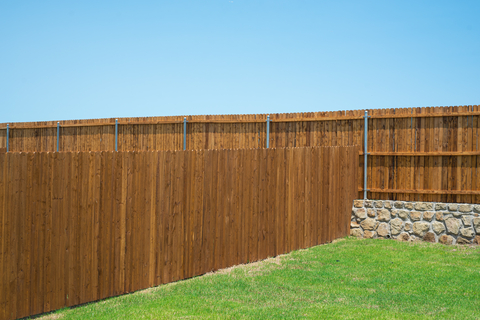
Conclusion: The Smart Choice for Your Garden
When comparing timber vs metal fencing, timber consistently comes out on top for many UK homeowners. It offers:
- Superior Cost-Effectiveness: Lower upfront costs and potential DIY savings.
- Unmatched Aesthetics & Versatility: Natural beauty that adapts to any garden style, easily customised, and excellent for privacy.
- Strong Sustainability Credentials: A renewable resource that stores carbon, with significantly lower embodied energy than metal.
While metal has its applications, timber fencing provides an unbeatable combination of affordability, beauty, privacy, and environmental responsibility. Add the ease of installation and repair, and the proven durability of modern pressure-treated wood, and it’s clear why timber remains the nation’s favourite fencing material.
Ready to transform your garden with high-quality timber fencing? Explore our extensive range of services or contact our expert team today for advice tailored to your project.



